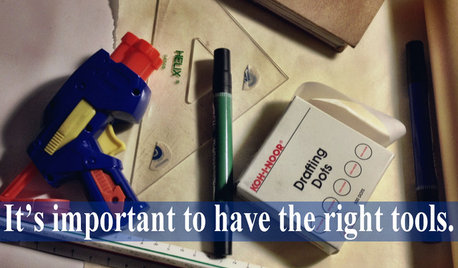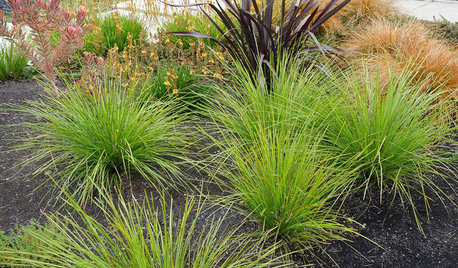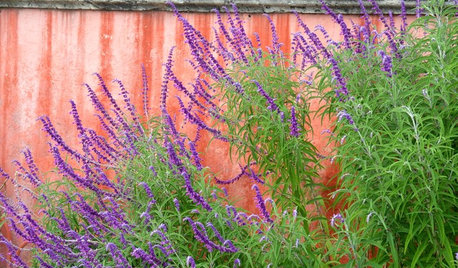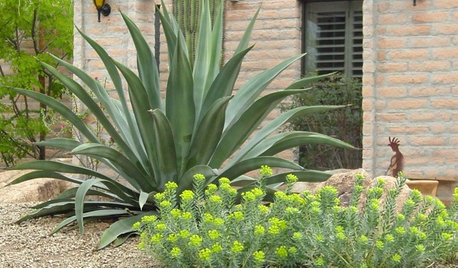What has this drought taught you?
merj13
21 years ago
Related Stories

LIFEHouzz Call: What Has Mom Taught You About Making a Home?
Whether your mother taught you to cook and clean or how to order takeout and let messes be, we'd like to hear about it
Full Story
FALL GARDENINGWhat Monarch Butterflies Taught Me About Garden Design
Thinking like a butterfly leads to fresh perspectives in the garden and in life
Full Story
COFFEE WITH AN ARCHITECTWhat My Kids Have Taught Me About Working From Home
Candy and Legos aren't the only things certain small people have brought to my architecture business
Full Story
LIFEDesign Lessons My Mother Taught Me
In honor of Mother’s Day, professionals on Houzz reflect on the design and style wisdom their mothers passed on
Full Story
HOUZZ TVHouzz TV: This Dream Midcentury Home in a Forest Even Has Its Own Train
Original wood ceilings, a cool layout and, yes, a quarter-scale train persuaded these homeowners to take a chance on a run-down property
Full Story
WORLD OF DESIGNEngland’s Most Famous Garden Designer Has These Tips for You
Lancelot 'Capability Brown' was born 300 years ago, but his ideas about naturalistic landscape design may be more relevant than ever
Full Story
REMODELING GUIDESOne Guy Found a $175,000 Comic in His Wall. What Has Your Home Hidden?
Have you found a treasure, large or small, when remodeling your house? We want to see it!
Full Story
GRASSESVersatile Breeze Mat Rush Sails Into Drought-Tolerant Yards
Grassy Lomandra longifolia thrives year-round in shady and sunny gardens, in containers and in the ground
Full Story
GARDENING GUIDES10 Plants for Colorful Fall Blooms in the Drought-Tolerant Garden
Want fall color but not a big water bill? Consider these not-too-thirsty fall bloomers
Full Story
GARDENING GUIDESHow to Spot a Drought-Tolerant Plant
Label? Who needs a label? Learn the characteristics of plants that can thrive in hot, dry conditions to help you pick the right ones
Full StoryMore Discussions






pamritchie
jenny_in_se_pa
Related Professionals
Ballenger Creek Landscape Architects & Landscape Designers · Bridgeport Landscape Contractors · El Reno Landscape Contractors · Kearny Landscape Contractors · San Rafael Landscape Contractors · White Bear Lake Landscape Contractors · Oxon Hill Landscape Contractors · Kingsburg Landscape Contractors · Ansonia Landscape Contractors · Cherry Hill Siding & Exteriors · Overland Park Siding & Exteriors · Binghamton General Contractors · Gloucester City General Contractors · Perrysburg General Contractors · Riverdale General ContractorsFrieda__IL
Patriz
Sherrie_Florida
maggieredwing
realtorgirl
wild_garden
stitches216
Jwj__
plantladyco
merj13Original Author
jenny_in_se_pa
dawnstorm
pennsylvania_pete
beckyE
stitches216
bluesmom
anita
lazy_gardens
mjsee
jenny_in_se_pa
jeanr
Eduarda
JohnnieB
Sherrie_Florida
plantladyco
rosie
merj13Original Author
stitches216
Meghane
Linda_8B
stitches216